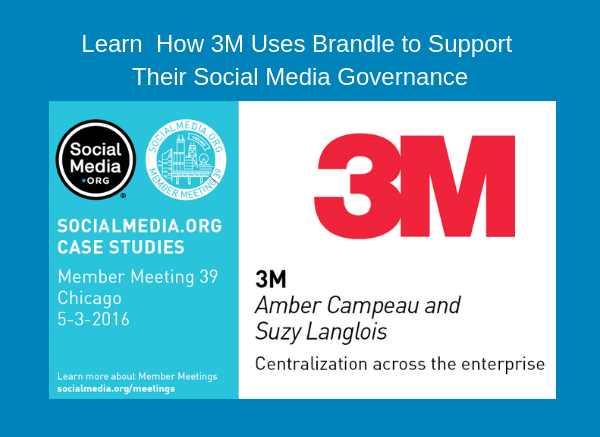 It predates the rise of "social business" but one of the most compelling and useful business books I've read is Andy Grove's "Only the Paranoid Survive: How to Exploit the Crisis Points That Challenge Every Company". I read it when it came out in 1996 and its wisdom – particularly around "strategic inflection points" – has never left me:
It predates the rise of "social business" but one of the most compelling and useful business books I've read is Andy Grove's "Only the Paranoid Survive: How to Exploit the Crisis Points That Challenge Every Company". I read it when it came out in 1996 and its wisdom – particularly around "strategic inflection points" – has never left me:
“A strategic inflection point is a time in the life of business when its fundamentals are about to change. That change can mean an opportunity to rise to new heights. But it may just as likely signal the beginning of the end.”
Grove lays out six (6) areas of change that can cause inflection points for your business:
- Competition (e.g. the rise of the big box store)
- Technology (e.g. mobile replacing the desktop)
- Customers (e.g. changing tastes or expectations)
- Suppliers (e.g. the provider of your internet service or a product component)
- Complementors (e.g. the software developers who build for your app store)
- Regulation (e.g. Obamacare)
As obvious as this may seem in hindsight, I find (and Grove argues) that too many companies do not pay proper attention to these forces of change and they get caught on the wrong side of an inflection point. A drawing of an inflection curve from Mr. Grove's book might be illustrative at this point:
As you can see when a company is at an inflection point it has two options: rise to "new heights" or slide down a path of "decline".
Last night I had the opportunity to spend a few hours with Matt Ridings and Amber Naslund of SideraWorks. The whole time I was listening to Matt and Amber describe their work, I kept thinking about Grove's book and how, if he were writing it today, he'd be examining how social media is forcing companies to become social businesses. And it's not just a technology change, I can make the argument that its hitting 5 of Grove's 6 areas of change:
- Technology - there is little doubt that social media is a technological force reshaping behavior in a wide swath inside today's enterprise.
- Customers - customers are now more informed, more empowered and they expect more from the companies with which they do business.
- Suppliers - until the "Intel Inside" campaign, few customers knew who a company's suppliers were; now thanks to the expression of B2B relationships via social media, a company's suppliers are more visible and their actions can have quick and immediate impact on the value of a brand.
- Competition - social media and cloud computing have made it possible for new competitors to arise silently and quickly as well as allowing existing competitors who are agile to reshape the playing field, seemingly overnight.
- Complementors - in this category I would put the advocates and mavens (as Malcolm Gladwell calls them) who are on social media building their own brand (business and/or personal) with the tools of your trade and the currency of information.
When it comes to the effect these forces of social have on business, Amber and Matt understand them as well as anyone I've met.
As Charlene Li of the Altimeter Group has already pointed out, social resides throughout the enterprise, affecting up to 13 departments. Teams are reaching out to customers, customers are talking – sometimes shouting – back, support requests are coming in, responses are going out, insights are to be gained; employees are to be managed, advocates cultivated, and channel partners engaged; social policies must be managed, social assets tracked and hopefully somewhere in the middle is a central strategy team supported by some kind of "air-traffic control" system. If that isn't the definition of systemic change, I don't know what is.
However, in talking with the smart folks at SideraWorks, too many businesses still look at social media as primarily a technological challenge. It's not! It's a force that requires a company to respond by adapting its culture, policies and practices.
When we look at history, we often think of key events as singular points in time but they are often extended periods of change. We've been in the midst of the Information Revolution for a few decades now and while I can't say when it will end, I can say with some confidence that "it ain't over yet!" This revolution has been coming in waves starting with the rise of centralized data processing, evolving through mini-computers, micro-computers, and personal computers followed by the internet, the world wide web, and search. Now, we have today's upheaval via mobile, social, and local and the future promise of big data.
If you read Grove's book and look at how the ascendant companies of the early days of the information revolution failed to respond to the next phase, I think you'll understand why more companies need to be listening to people like Matt and Amber. Inside each company is what Grove calls "Helpful Cassandras" who see the impact of this force of change first hand and who push for the business to react. It is often these Cassandras who reach out to SideraWorks but for them to be successful the C-Suite has to listen, buy in and validate the change process to the rest of the company.
If you're a CxO of an enterprise, I urge you to read (or reread) Grove's book and then give SideraWorks a call. Social media is reshaping your business whether you like it or not and time spent with them could put you on the right post-inflection-point path.
With that, I'll leave you with two final quotations from Mr. Grove's book:
“The ability to recognize that the winds have shifted and to take appropriate action before you wreck your boat is crucial to the future of an enterprise.”
“[M]ost companies don't die because they are wrong; most die because they don't commit themselves. They fritter away their valuable resources while attempting to make a decision. The greatest danger is in standing still.”
-Andrew S. Grove









